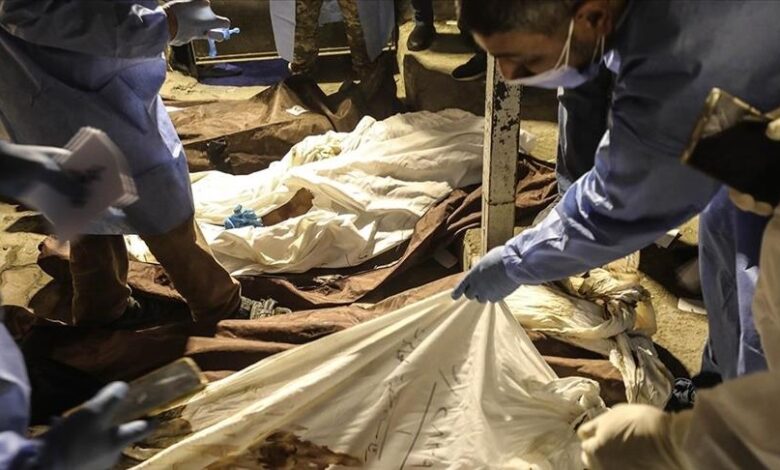Assad’s dungeons: the world media is shocked by the scale of the horror

After the overthrow of Bashar al-Assad’s regime in Syria, the doors of prisons and torture chambers, which for decades hid the true scale of human suffering, were opened to the world. Seidna prison, located near Damascus, became one of the most terrible places where opponents of the regime were held and tortured. Tens of thousands of people were killed, tortured or simply disappeared without a trace within these walls.
International mass media and analysts are trying to comprehend the scale of cruelty that took place in these “Assad prisons”. Publications in the world press are full of headlines such as “Seydna’s hell: testimonies of survivors” or “Syria after Assad: how the country will bear the burden of the truth.” Journalists draw parallels with the greatest tragedies of the 20th century, asking how a society that has survived such crimes can find a way to recovery and justice.
Le Soir – Belgium. Brussels Le Soir takes a look at hell:
“The first footage from the prison torture chambers shows cells in a terrible condition: walls covered with dirt, rooms without windows, in which, judging by everything, dozens of prisoners were kept in terrible cramped conditions – without a single mattress.
… Executions were carried out en masse, people were hanged next to each other. … Some prisoners talked about the existence of so-called “salt cells” in Sydney prison. There, guards stacked the corpses before loading them onto trucks that then took them to mass burial sites. However, sometimes the guards also locked prisoners in these cells, who had to stand there up to the middle of their calves in salt water surrounded by corpses.
Today, when the prison doors have opened, many are afraid to even realize the full scale of the horrors and tortures that took place during the rule of the Assad regime.”
De Volkskrant – Netherlands. De Volkskrant columnist Frank Heinen reflects on the banality of evil – in photographs that have presented our view and in what has not.
“Assad is lying on the sofa. Assad is in white underwear in the kitchen. Assad is on a bicycle. Everyday situations, nothing special. Nowhere is there even a hint of what a terrible place Syria has turned into under the rule of Assad.
… [When dealing with photographs] context is important. In one of the photos from Sidna Prison, the slaughterhouse where tens of thousands of people were locked up and tortured, pieces of rope can be seen on the dirty floor. … Only after hearing stories about barbaric torture, you understand that these ropes are from the gallows.”
Új Szó – Slovak. The unexpected release and the catharsis caused by it give society a chance, writes foreign policy expert Botond Feled on the pages of Bratislava’s Új Szó:
“If soon the new government does not gain legitimacy in the international arena, the country may plunge into a new civil war.
… At the same time, we are facing a rare moment in history when the people can freely enter the prisons of the dictatorial regime that has just fallen and see all these corridors, rooms for storing corpses and torture chambers. We in Europe cannot even imagine what an incredible sense of relief people feel.
… There may be enormous social energy in it, which gentle leadership could channel. The experience of world history does not give reason to fall into excessive optimism, but let’s see if Syria will survive as a single country, and if so, in whose hands it will end up.”
Turkish news agency “Anadolu” (AA) informs, that during the rule of the Baathist regime in Syria, thousands of people became victims of torture in dozens of torture chambers, among which Seidna prison, located near Damascus, stands out.
Since the popular uprising began in March 2011, the Baath regime, which eventually collapsed, tortured thousands of Syrians to death. However, human rights activists fear that the number of dead may reach tens of thousands. According to the Syrian Organization for Human Rights (SNHR), regime forces have detained at least 1.2 million people during the civil war, subjecting them to severe torture.
The Baathist regime announced more than 20 so-called amnesties, but international human rights organizations note that even during these amnesties, the detention and torture of Syrians continued. Numerous international reports emphasize that the detention centers have actually turned into torture centers, and the regime’s special services have organized a network of such torture centers throughout the country.
According to SNHR data, which were exclusively presented to “Anadolu”, centers for detention and torture of Syrians were divided into several types: civilian prisons, military prisons, secret unofficial detention centers, special units for interrogation and torture.
The Baathist regime has established more than 50 such centers in almost every province of Syria. The central prisons in Aleppo, Hama, Homs, Suwayd and Adra in Damascus, where mainly political opponents were held, attracted special public attention. In many cases, the release of prisoners was one of the first steps taken after territories were seized by anti-government forces. Meanwhile, in Tartous and Latakia prisons, prisoners are still awaiting release.
After the fall of the 61-year-old Baath regime on December 8, particular attention was drawn to Seidna prison. Surveillance cameras captured some inmates who could not be found in accessible sections of the prison, raising suspicions about the existence of secret underground wards. Rescue teams are now clearing tunnels and breaking down walls to find those who may still be trapped.
Meanwhile, Syrians who haven’t heard from their relatives and loved ones for years flock to prisons, including Seydna, in search of any trace of the missing. This tragic situation served as a reminder of the horrors that the regime has hidden for decades, and of the long way Syria still has to go to restore justice and human dignity.





